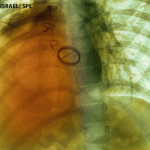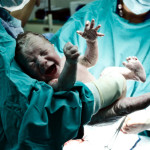• Time to consider the risks of caesarean delivery for long term child health
In an analysis article, Jan Blustein and Jianmeng Liu examine the evidence linking caesarean delivery with childhood chronic disease and say that guidelines on delivery should be reviewed with these risks in mind. For example, according to recent research, children delivered by caesarean have a higher incidence of type 1 diabetes, obesity, and asthma.
Blustein and Liu say that “fuller knowledge of risks and benefits may help reduce the growth in rates of caesareans,” and cite a recent study that offered decision aids to pregnant women who had already had a caesarean and found an increased rate of vaginal birth. “We live in a world where caesarean rates cannot be explained by compelling medical indications,” the authors say. “In that world, we all have a stake in a thorough discussion of the risks of caesarean for long term child health.”
• Medical abortions more common than surgery for first time in 2014 in England and Wales
News editor Zosia Kmietowicz reports on figures from the Department of Health that show that medical means were used in 51% of abortions carried out in England and Wales in 2014, the first year there were more medical than surgical procedures. In 2013 just under half of terminations (49%) involved pills, while in 2004 the figure was 20%, she writes. “In total, 184 571 abortions were performed in 2014 across England and Wales, a slight fall on the previous year (185 331).”
 • Sepsis in children
• Sepsis in children
In this week’s clinical review, consultant paediatric intensivists Adrian Plunkett and Jeremy Tong focus on sepsis in children. The key points in their review are as follows:
• The initial clinical presentation of sepsis in children may be non-specific (especially in younger age groups)
• Given the time critical nature of severe sepsis and septic shock, when sepsis is suspected on clinical grounds it is usually best to start investigations and treatment for sepsis, including fluid resuscitation, and to continue with these until sepsis has been excluded
• Progression to organ failure and shock is often rapid, so early recognition and treatment is crucial
• Apart from antibiotics, there are currently no specific treatments of proved value
• Other treatment after antibiotics is supportive and should be delivered according to internationally recognised, consensus based guidelines
Trevor Jackson is deputy editor and head of news and views, The BMJ.
tjackson@bmj.com

